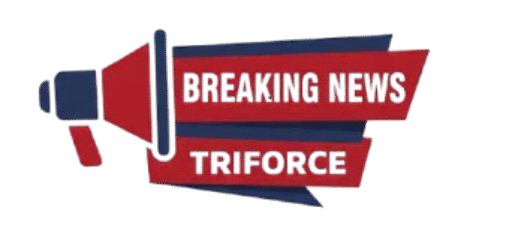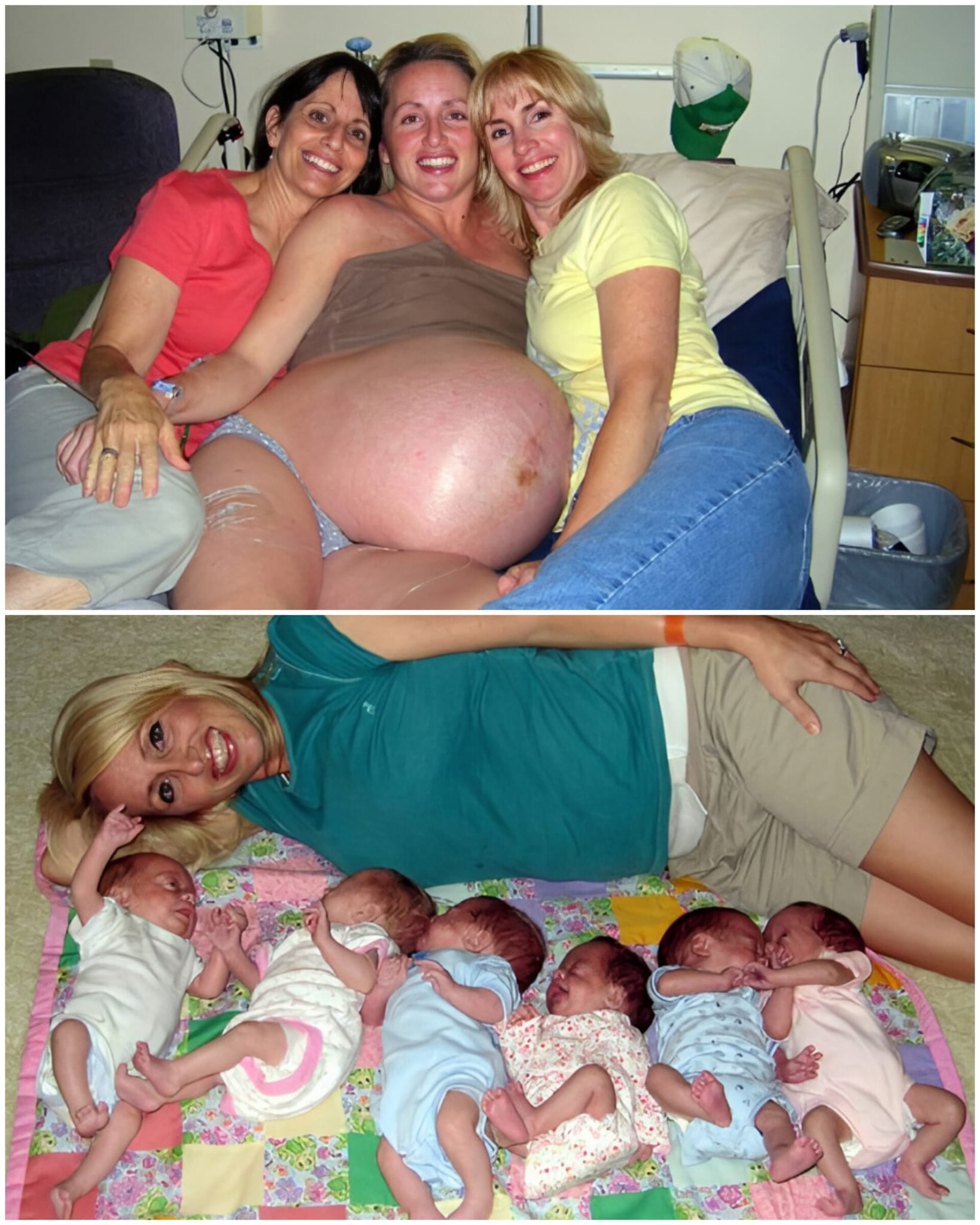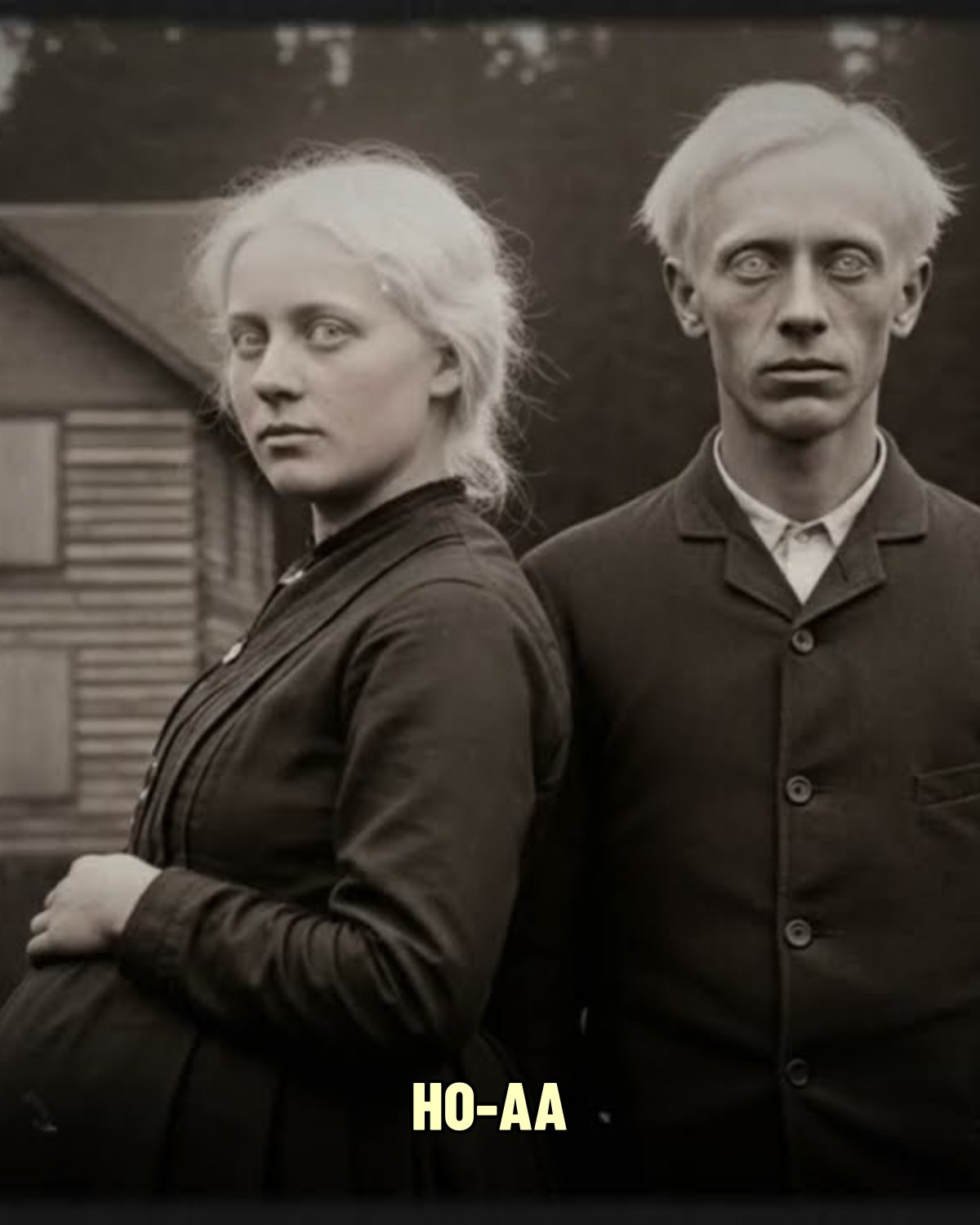As the ultrasound wand glided across her swollen abdomen, the room grew eerily quiet. The technician’s eyes widened behind her mask, and she double-checked the screen before stammering, “I… I count eight.” The mother froze, her heart pounding like a drum in her chest. Eight? It was impossible. Or was it?

On March 15, 2025, in a bustling hospital in New York City, what started as a routine prenatal checkup turned into a medical bombshell that would shatter records and ignite global frenzy. Elena Vasquez, a 38-year-old schoolteacher from Brooklyn, had been feeling unusually exhausted for months. What she thought was a twin pregnancy—perhaps triplets at most—revealed itself as something straight out of a science fiction thriller: octuplets. Eight tiny lives, all viable, all fighting for space in a body that wasn’t designed for such a feat. Cameras rolled as news crews descended, capturing Elena’s stunned expression, her hands cradling a belly that protruded like a mountain, defying gravity and every obstetric textbook in existence.
But this wasn’t just about numbers. This was about survival against insurmountable odds. Elena’s story began innocently enough. Married to her high school sweetheart, Marco, a construction worker, the couple had struggled with infertility for over a decade. Multiple rounds of IVF had failed, leaving them heartbroken and financially drained. Desperate, they turned to an experimental fertility clinic in California, one that promised cutting-edge treatments blending AI-driven embryo selection with hormone therapies tailored by algorithms. “We just wanted one baby,” Elena later confessed in an exclusive interview. “But fate had other plans.”
The pregnancy announcement came in whispers at first—family gatherings where Elena’s growing bump sparked jokes about “eating for two… or three?” But as weeks turned to months, the truth emerged. By week 20, scans confirmed the octuplets: four boys and four girls, each with their own amniotic sac, a rare configuration that reduced some risks but amplified others. Doctors warned of preeclampsia, gestational diabetes, and the very real threat of premature delivery. Elena was confined to bed rest, her body a vessel under constant surveillance. “Every day felt like a battle,” she said. “I could feel them moving, kicking, like a symphony inside me. But I also felt the fear— what if I couldn’t carry them all?”

The world watched as Elena’s story leaked online. Social media exploded with hashtags like #OctoMomMiracle and #EightIsFate. Conspiracy theorists claimed it was a government experiment; skeptics called it a hoax. But the medical community knew better. Dr. Amelia Cortez, lead obstetrician at New York Presbyterian Hospital, described it as “a perfect storm of biology and bravery.” In a press conference, she explained: “Multiples beyond quadruplets are exceedingly rare—less than 1 in 700 million naturally. With fertility treatments, the odds improve slightly, but sustaining eight fetuses to viability? That’s unprecedented in modern records.”
As Elena’s due date approached—accelerated to 28 weeks to minimize risks—the hospital transformed into a fortress. A team of 50 specialists, including neonatologists, surgeons, and anesthesiologists, stood ready. On that fateful March morning, under the glare of operating room lights, Elena was wheeled in for a C-section. The air was thick with tension; monitors beeped relentlessly as anesthesia took hold. Marco paced outside, clutching a rosary, tears streaming down his face. “I prayed for a miracle,” he recalled. “But eight miracles? It was terrifying.”
One by one, they emerged—tiny cries piercing the sterile silence. Baby A, a girl named Sofia, weighed just 1 pound, 8 ounces. Then came Mateo, Isabella, Diego, Luna, Javier, Camila, and finally, little Enzo. Each infant, no bigger than a loaf of bread, was whisked to the NICU, where ventilators hummed and incubators glowed like futuristic pods. The delivery took 45 minutes, but it felt like an eternity. Nurses, many in tears, arranged the octuplets in a custom rainbow-striped blanket for their first group photo—a poignant image of eight swaddled bundles, eyes barely open, fists clenched in defiance. That photo? It went viral within hours, amassing over 500 million views on platforms like TikTok and Instagram. Celebrities shared it; world leaders sent congratulations. But beneath the awe lay a darker undercurrent: whispers of ethical dilemmas, overpopulation debates, and the toll on Elena’s body.
The risks were staggering. Octuplet pregnancies carry mortality rates as high as 50% for the infants and severe complications for the mother, including organ failure and lifelong health issues. Elena endured it all—postpartum hemorrhage, hypertension spikes, and weeks of recovery in ICU. Yet, against every prediction, all eight babies survived. By day 60 in the NICU, they were breathing on their own, gaining weight, and showing personalities: Sofia the feisty one, Enzo the quiet observer. “It’s like winning the lottery eight times,” Dr. Cortez said. “A triumph of neonatal care, from surfactant therapies to 3D-printed feeding tubes. But let’s be clear: this isn’t something we’d recommend. It’s a wake-up call on fertility ethics.”
Elena’s journey sparked heated discussions worldwide. Bioethicists argued over the limits of reproductive technology—should clinics cap embryo implants? Environmentalists pointed to resource strains, with one viral op-ed titled “Eight Babies: A Blessing or a Burden on a Crowded Planet?” Feminists hailed Elena as a symbol of empowerment, while critics accused the media of sensationalism. “People forget the human side,” Elena responded in her first post-birth interview, her voice steady but weary. “These aren’t statistics; they’re my children. I carried them through pain, doubt, and love. Faith got me here—faith in science, in my body, in something bigger.”
Today, seven months later, the Vasquez family navigates a new normal in a spacious home donated by a philanthropist. The octuplets, now chubby and cooing, fill the air with laughter and chaos. Elena shares glimpses on a carefully curated social media account, turning her story into a platform for infertility awareness. “We didn’t choose this,” she says. “But we’d do it again. Life finds a way.”
Yet, questions linger. Was this a medical marvel or a risky gamble? As fertility tech advances—CRISPR editing, artificial wombs on the horizon—Elena’s octuplets stand as a beacon and a warning. In a world obsessed with extremes, her tale reminds us: miracles come at a cost. And as that ultrasound image fades from memory, one thing remains: the unbreakable bond of a mother who carried eight worlds within her, emerging stronger, forever changed.
What if it happens again? The world holds its breath.




